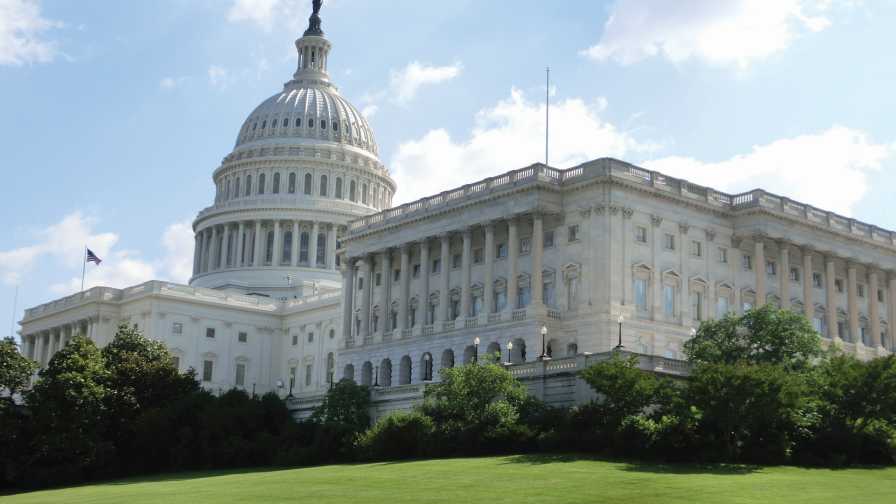Perspective: What a New Presidency Could Mean for the Green Industry
 The fortune cookie sagely foretold, “you shall live in interesting times.” However, the cookie didn’t say we’d have all that “interesting” crammed into the Spring of 2020. Given what we as an industry community have been through this past spring, it’s worth reflecting a bit.
The fortune cookie sagely foretold, “you shall live in interesting times.” However, the cookie didn’t say we’d have all that “interesting” crammed into the Spring of 2020. Given what we as an industry community have been through this past spring, it’s worth reflecting a bit.
January started off well enough. Strong optimism was on display at the winter shows and meetings as folks prepared for spring. But by March, it was clear that the COVID-19 pandemic had global intentions. Case clusters then community spread in various states led to stay-at-home orders and essential worker restrictions. The existing federal guidance was fairly helpful, though limited. In the end, states and localities wielded the ultimate authority.
AmericanHort fortunately had some critical infrastructure of our own: a staff team of five dedicated to our advocacy and research mission; talented and committed volunteer leaders; and a grassroots partnership program that encompasses most of the state industry organizations. We also manage the Nursery and Landscape Association Executives group (NLAE). These networks were critical to facilitating a coordinated industry response with the goal of keeping the market supply chain functioning. We won most of the essential battles we fought, though there were epic challenges in places like Michigan and Pennsylvania.
The Congressional response was surprisingly swift. Many in our industry took advantage of emergency safety nets such as the Paycheck Protection Program. USDA received billions for direct grower relief. At AmericanHort, we nimbly aligned experts to help the industry navigate the fast-changing landscape.
By late April, restrictions were beginning to ease for most, and by May, retailers reported record sales. Some benefit to people cocooning at home with few options for spending discretionary dollars. Plants and landscape supplies were hot commodities.
Still, some growers took big hits early on, the extent of those hits depending on product mix, geography, and market channels. As we have worked to gain nursery and floriculture grower eligibility for USDA relief for lost sales and revenue, working with Dr. Charlie Hall, we have estimated that direct grower losses due to COVID this spring season were between $732 million and $1.2 billion.
Pandemic response aside, our key federal advocacy priorities fall into several areas: workforce development; business best practices; sustainable plant production and use; and, horticultural research and innovation.
On workforce and labor issues, it’s disappointing the Senate failed to take up its own version of an agricultural worker reform. And frustrating that the Administration keeps going back to immigration fearmongering and further restriction of legal immigration and worker visas. There is broad agreement among economists that recently announced restrictions will hurt — not help — the economic recovery.
On a more positive note, we are closer than ever to resolving the “horticulture is agriculture” trucking definition problem. And we cooperated on a successful regulatory response to the Ralstonia pathogen amidst the pandemic and worked toward successful launch of the new Offshore Greenhouse Certification Program for unrooted plant cuttings, among other initiatives.
Looking to November and Beyond
Like it or not, politics shape the industry’s business environment. We have a high-consequence election looming. How will it shake out? Uncertainty there too, but here is where things stood as summer arrived.
With respect to Congress, it’s nearly certain the House of Representatives will remain under control of the Democrats. It takes 218 seats, a simple majority, to control the House. Combined polling suggests 223 seats are rated safe, likely, or leaning Democratic. Another 19 are tossups.
The Senate is right on the bubble. With one-third of the Senate up for reelection, polling suggests 50 seats to Republicans and 46 seats for the Democrats, with four battleground races as toss-ups (Arizona, Colorado, Maine, and North Carolina). No matter the outcome, the party with the majority will have a razor-thin margin.
And the Presidency? Though a lot can change quickly, polling now suggests it is Joe Biden’s race to lose. The most recent Politico/Morning Consult poll had President Trump’s approval rating dipping to 39%, and disapproval at 59%. By contrast, former Vice President Joe Biden had a 46% approval rating against 47% disapproval. Trump has lost ground with older and independent voters, among others. Polls now show 75% of respondents describing the country as “pretty seriously off track.”
Biden, following the axiom that you should never get in the way of a man destroying himself, has been laying low, but the pace of his campaign should pick up in the coming months. He has done little in the last few months but still finds himself up in the polls.
There are five states — Arizona, Florida, Michigan, Pennsylvania, and Wisconsin — where Trump won in 2016 by razor-thin margins. Midwest states will be key; if Trump loses one of them, especially Biden’s home state of Pennsylvania with 20 electoral votes, the path to 270 electoral votes needed to win is tough.
Bottom line is, if you live in one of these states, and you are spotted running out of your house screaming, we know it’s likely the political ads that drove you mad.
Implications for Policy
A few thoughts on what a Biden victory might mean for relevant policy issues. Some will depend on to what degree Biden is able to chart a centrist course in the face of a growing and increasingly restive bunch of progressives well to his left.
Immigration, Visas, and Labor: If Democrats take a bipartisan path on this, we could see real opportunities for immigration and visa reform like we saw in the House last year. That will require appeasing or overcoming labor union opposition.
Tax and Wages: We would expect to be playing defense on most tax issues. Although Democrats know they’ve got to deepen their support, particularly in the small business community and in rural areas. A national minimum wage increase would seem a virtual certainty.
Regulation: Environmental and labor regulation will likely increase, as Democrats would look to bring back some of the regulations the Trump administration rolled back.
Climate Change: A serious focus on climate policy could mean both challenges and potential opportunities for our industry. It is certain to be a priority for the Democrats.
Intangible Effect: Investors and business loathe uncertainty. Would a Biden victory bring a more stable, consistent, predictable presidency?
This much is certain: regardless of election outcome, we will continue to rely on several key Congressional champions to help achieve our policy goals. Between now and November, our PlantPAC political action arm will be leveraging support for those who in turn support Horticulture.









